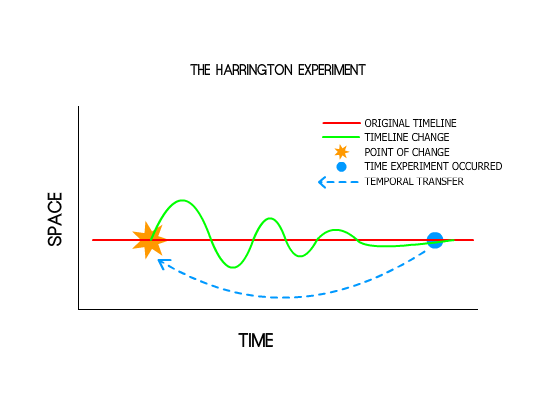As established already*, Liang Oscillation is the behaviour exhibited by the continuum of spacetime when altered. The quantum states of particles are defined by the 5th ‘meta dimension’, which is best thought of as the path of spacetime. When a Chrononaut alters past events (or visits them), they enact a change on the shape that spacetime occupies in the meta dimension.
Plotting a space-time graph, we can imagine the history of a complex system to be represented as a line. From an abserver looking at this history the system’s history is fixed. To the present, the past is a straight line and the future is non existant. Now, if we make a small change to the system at a point some time ago, spacetime will ‘veer off’, as a sequence of chaos amplifies to make a very immediate change. This ‘butterfly effect’ was predicted by Chaos Theory as early as 2.0.C. However, unknown at the time, a curious property of the meta dimension is that the path of quantum probability has an ‘optimum’, almost like a river settling into a valley. This leads a change in the system to eventually reverse and invert repeatedly, our ‘line’ of spacetime waving up and down until the deviances slowly converge and the system’s distant future is largely unchanged from how it was originally; hence the ‘occillation’ Dr Liang postulated in 2.9.C.

